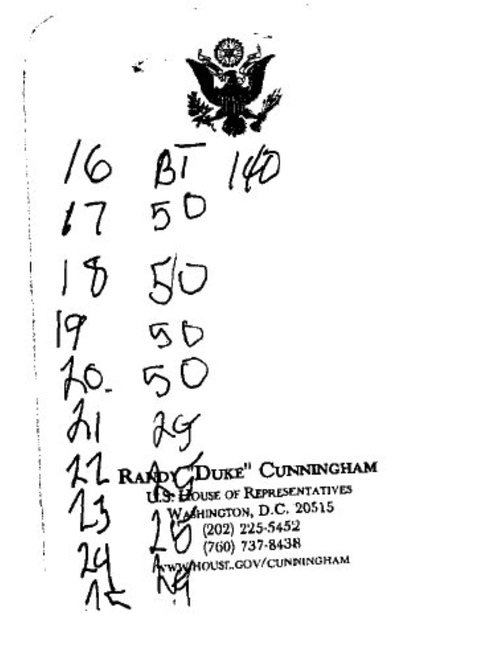Taibbi: The Great American Military Rebrand
Authored by Matt Taibbi via TK News,
Fifteen years ago, as the Bush years waned and political division began skyrocketing, one thing everyone agreed on was that “earmarks” were bad. A trifecta of scandals involving prison-bound congressman Randy “Duke” Cunningham, Republican super-lobbyist (and future Kevin Spacey role) Jack Abramoff, and a $320 million “bridge to nowhere” exposed an intricate system of legalized payoffs both parties scrambled to oppose.

Earmarks, those handy appropriations tools congressfolk used to slip million-dollar favors into the budget, had been ballooning in number for over a decade and looked so bad upon reveal, “corruption and ethics” became the top issue in the 2006 midterms. The Cunningham affair was the worst, featuring a congressman who wrote a “menu” of bribe services (he should have consulted Stringer Bell for legal advice there) and handed out tens of millions in dubious deals to a defense contractor named Mitchell Wade. The San Diego Tribune reporter who broke that story explained:
In return, the contractor showered the congressman with gifts — helping him finance a mansion in Rancho Santa Fe, a condo overlooking the nation’s capital, exclusive use of a yacht on the Potomac, antiques, private-jet travel and prostitutes.
Fast forward to last week. As January 6th hearings, a presidential fist-bump, and a Kardashian spawn’s gender reveal gobbled attention, the House quietly passed a monster $839 billion defense package. It was “the definition of a bipartisan bill,” chirped Alabama’s Mike Rogers, as 180 Democrats and 149 Republicans joined to smash by tens of billions previous records for military spending. With this already underreported story, just one news outlet, Roll Call, described a “first of its kind” report published by the Department of Defense Comptroller’s office, which revealed at least $58 billion of “congressional additions” above Joe Biden’s budget request.
As former Senate aide and defense budget analyst Winslow Wheeler puts it, these “additions” are “not (all) earmarks under either the House’s or Senate’s shriveled definition of them, but they are all earmarks… under the classic understanding.” What’s in those requests? As Roll Call’s Donnelly explains, the $58 billion included “money to respond to disasters and the war in Ukraine,” but also:
Billions of dollars in weapons the military did not seek, such as more than $4 billion worth of unrequested warships, many of them built by the constituents of senior appropriators.
This felt like Duke Cunningham days, back with a vengeance. The $58 billion revealed by the Department of Defense only pertained to “congressional increases” larger than $20 million. I asked the DoD to ask if they also counted smaller appropriations. So far, they’ve declined to comment, but according to several sources (and Roll Call), the actual amount of “additions” is almost surely far higher than $58 billion.

Both the triumphant return of the earmark and the enormous defense hike should have been big stories. To put $58 billion (at least) in defense “increases” in context, the amount of overall federal earmarks in 2006, the infamous year that prompted so much outrage, was said to be $26 billion. Meanwhile Biden’s one-year arms increase exceeds the pace of Donald Trump’s infamous $200 billion collective defense hike between 2017-2019. These are major surges past the levels of both pork and weapons spending that had progressives roaring for “change,” yet there’s almost zero outcry now. Why?
It feels like just the latest echo in a prolonged, very successful re-marketing effort. In 2008, disdain for the “War on Terror” propelled Barack Obama past Hillary Clinton, and failures in Afghanistan and other factors after Obama’s election soon led to the ultimate Beltway horror, i.e. proposed budget cuts. A Reuters story from early 2011 details the misery gripping the Pentagon after Obama suggested cutting $78 billion:
The proposed cuts, unveiled at a somber Pentagon briefing on Thursday, follow increased White House and congressional scrutiny of military spending, which has doubled in real terms since the September 11, 2001, attacks.
From that point, however, the U.S. embarked upon what geopolitical analyst Christopher Mott calls the “millennial rebrand of the neoconservative project,” and the Pentagon’s fortunes rose anew. In the Obama years, think-tankers, pundits, and other actors began to push inverted, left-friendly versions of Bush’s rejected military utopianism, this time focusing on using force to achieve social justice aims abroad. It worked, brilliantly.
TK News subscribers can read the rest here...
https://ift.tt/4kiuJRU
from ZeroHedge News https://ift.tt/4kiuJRU
via IFTTT




0 comments
Post a Comment